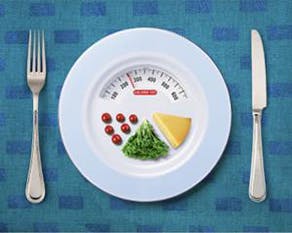Lifestyle (exercise)
HEALTH & WELLNESS
10.21.2014

While good nutrition is an essential part of healthful living, physical activity is also critically important for older adults as it can prevent many of the health problems that come with age. While many older people are familiar with aerobic activities like dancing, biking, jogging, and swimming that get you breathing harder and makes your heart beat faster, they are unaware of the importance of progressive resistance (or strength) training. Strength training makes muscles grow stronger so you can keep doing your day-to-day activities without becoming dependent on others.
To gain health benefits, you should engage in strength training to the point where it is hard for you to do another repetition in a set. A repetition is one complete movement of an activity, like lifting a weight or doing one sit-up. A set is completing 8 to 12 repetitions per activity. You can begin by doing one set and eventually work up to doing two orthree sets with a break of five minutes between each. There are many ways you can strengthen your muscles at home or in a gym: lifting weights; working with resistance bands; doing exercises that use your body weight for resistance such as push-ups and sit ups; heavy gardening like digging or shoveling; and yoga.
Strength training increases muscle mass and more muscle consumes more calories, so this kind of exercise is very helpful for weight loss and long-term weight control. Strength training also acts to improve your balance, coordination, and mobility as well as the quality of your sleep. Research has shown that strength training can help reduce the signs and symptoms of arthritis, back pain, depression, diabetes, and osteoporosis.
Once you begin a program of regular physical activity, you will likely find it not only healthy but fun. Some seniors will not start because they worry that exercise can result in injury or sudden heart attacks, but the health benefits of exercise far outweigh these risks. However, if you already have a chronic disease, you should check with your doctor before becoming more physically active.
Not doing any physical activity can be bad for you, no matter your age or health condition. Some physical activity is always better than none at all. Everyone's fitness level is different and, depending on your shape, start what you feel comfortable doing. Beginning guidelines for generally fit older adults without limiting health conditions include 150 minutes per week of moderate intensity aerobic activity plus muscle-strengthening activities for the major muscle groups (legs, hips, back, abdomen, chest, shoulders, and arms) on two or more days per week. You can break these exercises into short segments as long as you are doing physical activity at a moderate or vigorous effort for at least 10 minutes at a time. And remember to keep safe: make sure to warm up before exercise and cool down afterward; do not hold your breath during the activity and breathe on the exertion part of the exercise; move in a slow to moderate and deliberate manner; some muscle soreness is to be expected but stop if you feel pain in your joints.
Image Credits: tmcphotos/Shutterstock.com
Recommended Articles
The 5 Best Foods That Will Help Supercharge Your Brain
Amidst our busy schedule, it's important to retain our focus and memory. Resting alone is not...
Iron deficiency is a lot more common than you would think. A recent survey by SATA CommHealth(i...
Mars vs Venus: Understanding the His and Hers of Nutritional Needs
Mars vs Venus: Understanding the His and Hers of Nutritional Gaps Although their DNAs are...






